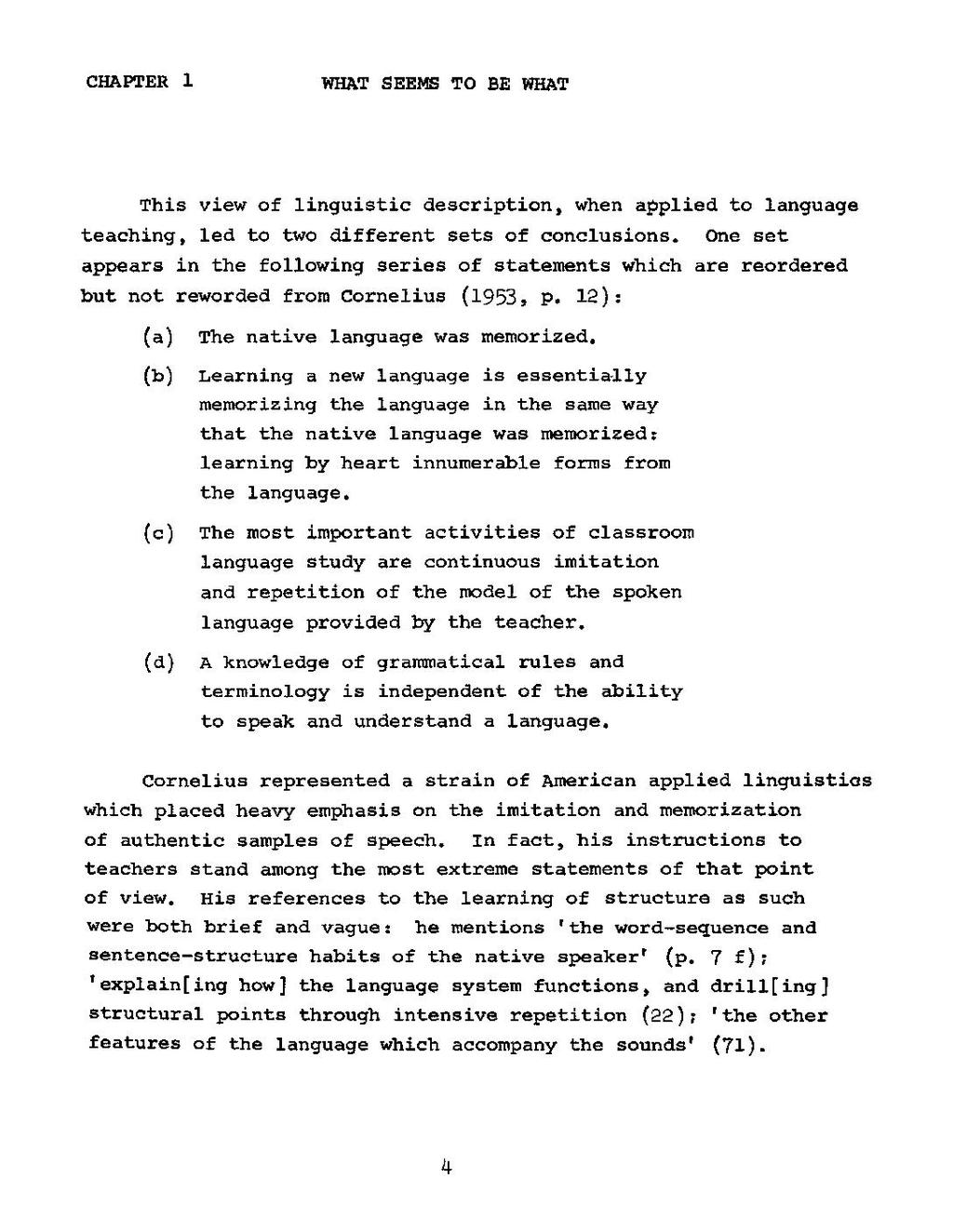This view of linguistic description, when applied to language teaching, led to two different sets of conclusions. One set appears in the following series of statements which are reordered but not reworded from Cornelius (1953, p. 12):
Cornelius represented a strain of American applied linguistics which placed heavy emphasis on the imitation and memorization of authentic samples of speech. In fact, his instructions to teachers stand among the most extreme statements of that point of view. His references to the learning of structure as such were both brief and vague: he mentions 'the word-sequence and sentence-structure habits of the native speaker' (p. 7 f); 'explain[ing how] the language system functions, and drill[ing] structural points through intensive repetition (22); 'the other features of the language which accompany the sounds' (71).
4
